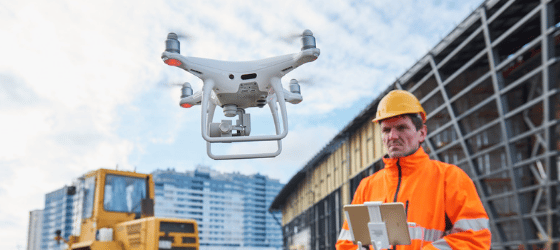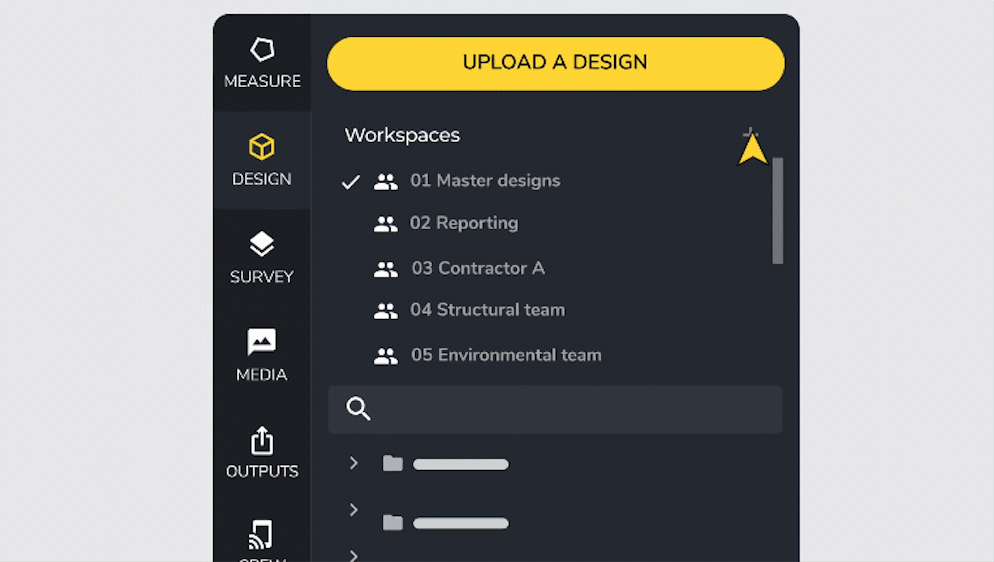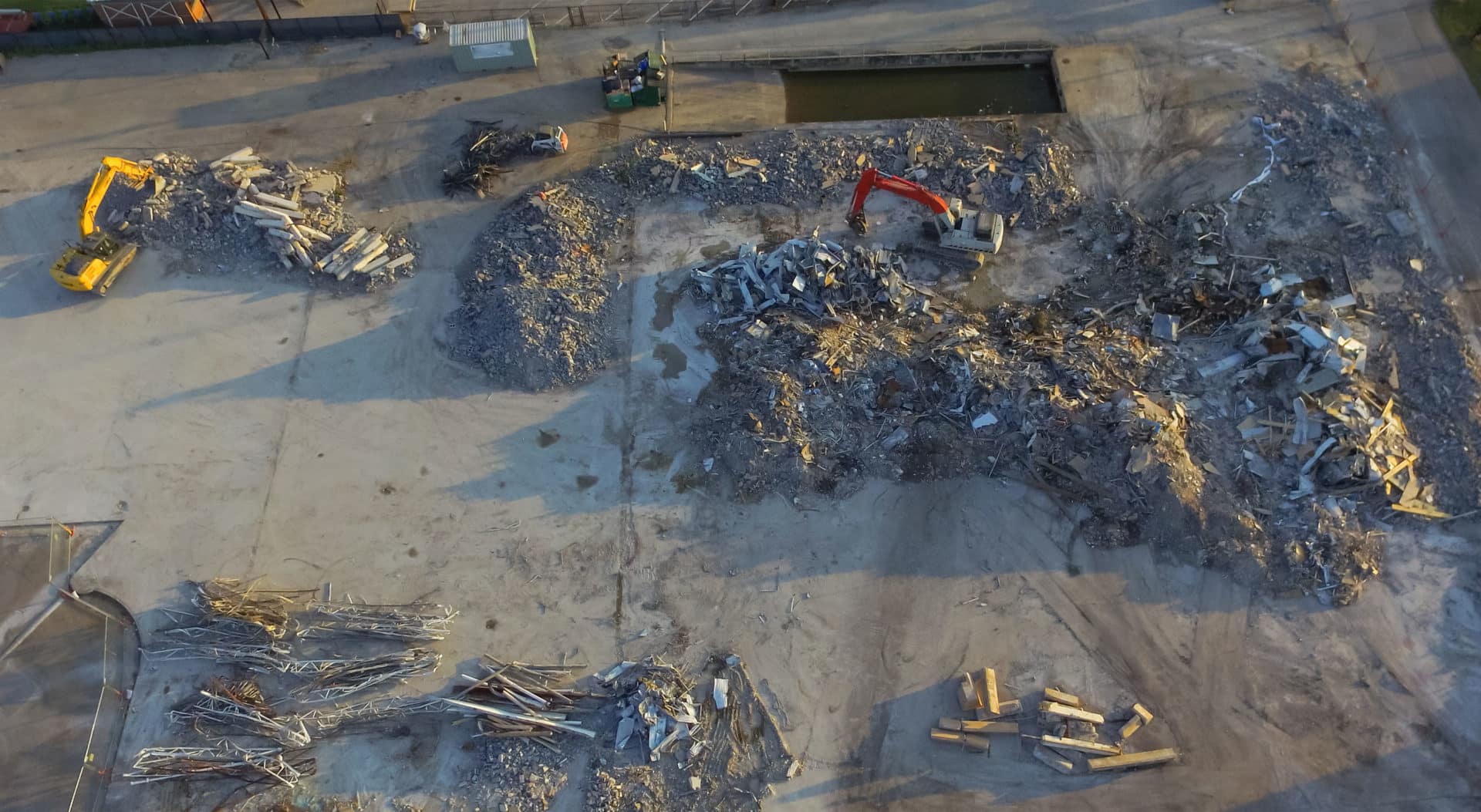When you switch from traditional base-and-rover surveying to drone surveying on site, you set yourself and your team up to make better, data-driven decisions.
The efficiency of drones allow you to shave days or weeks off typical surveying workflows. Drones are cheaper and simpler to use than traditional surveying equipment, so you don’t need to spend tens of thousands of dollars on hardware and you don’t need to have special training or education to capture site data. You can do it yourself. You no longer have to wait for infrequent or third-party surveys. You can update your data as often as you want to fly.
With the right processing software and ground control, you can achieve survey-grade accuracy throughout your site.
But before you can start reaping the benefits, there are a few regulations you need to consider before you send that first drone up in the air. Let’s go over some common laws and certifications needed to get your drone program started on site.

Airspace and pilot certification
A drone is a type of aircraft, albeit tiny. All unmanned autonomous vehicles (UAVs) are regulated by a country’s aviation authority.
The rules differ depending on where you are, but you can expect to have weight restrictions for your craft and some kind of certification or licensing for the pilots when it comes to flying commercially, as opposed to recreationally.
Where your site is located can also influence how, when, and if you fly, depending on the airspace it inhabits.
We’ll go over airspace and restrictions for the United States and Australia here, but if you want more information a different region, check out your country’s aviation department website.
Additionally, some websites catalogue regulations by country, like Global Drone Regulations Database, or there are apps, like the B4YouFly app for the US that give you information based on your location.
Australia pilot certification
Thanks to fairly recent changes in legislation, anyone can fly a drone that is under 4.5lbs (2kg) commercially without a license, provided you operate within CASA’s standard operating procedures. You’ll still need to register for an ARN before flying for commercial purposes. Register here.
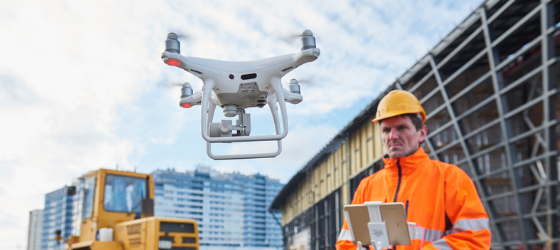
Getting your ARN is a simple. If you’re registering as an individual, you can apply quickly and easily online through the link above. (Be sure to have your passport or driver licence and one or more secondary documents, like a medicare card or bank statement, on hand to prove your identity.) Once you have a total of 100 points of ID prepared, you can begin the application process.
To get organizations or companies registered, you’ll need to submit Form 1170 instead.
Once you have an ARN, you can notify CASA of the area you intend to fly in here. This notification is valid for three years, after which it requires renewal.
United States pilot certification
Drones are regulated by the FAA, and you must get a license to fly. Flying drones 55lbs and under for commercial purposes (meaning during daylight hours, within line of sight, under 400 feet and under 100mph), is allowed after passing a UAS specific aeronautical exam (FAA 107).
The Part 107 exam can be a big deterrent for those interested in using drones on site, but it’s actually much easier to do than you might expect.
The test is sixty multiple choice questions, covering keywords, aviation terms, weather, and regulations. Many of these are pretty intuitive. And, as members of our sales team will attest, passing it on the first try as someone without any aviation background is not only possible, but easy.
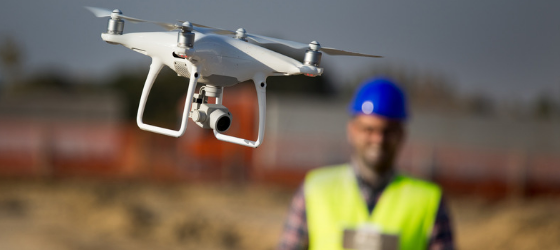
Restricted airspace
Another element you need to be aware of before you begin a drone program is what airspace your site is in.
Airspace is some portion of the sky that’s controlled by a country above its territory. Airspace is divided into six classes. These classes indicate its use and restrictions. For example, the airspace up at 2,500 feet is Class D, and it’s controlled. You couldn’t just fly something in this area without authorization.
While there are many nuances and allowances in controlled airspace, the things you watch out for are as follows:
- If your site is near an airport or helipad
- If your site is near a military base
- If your site is in an urban environment
Should the airspace you’re in be controlled, you’ll need to gain additional permission to fly it. This authorization would usually come from the airport or military. If you’re near one of 500 participating airports, you can get authorization via the LAANC program.
This is a new rollout from the FAA that drastically cuts down on the time spent waiting for authorization to fly drones in controlled airspace. All you need is to enter a few parameters and if you’re operating within Part 107 regulations and fly under a ceiling within a square mile, you can get authorization immediately.
You can obtain LAANC authorization through a number of FAA-partnered companies and apps.
